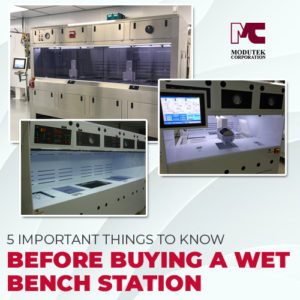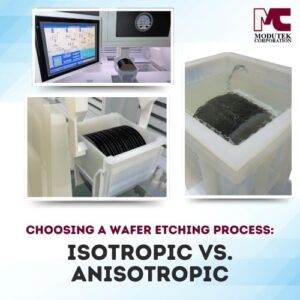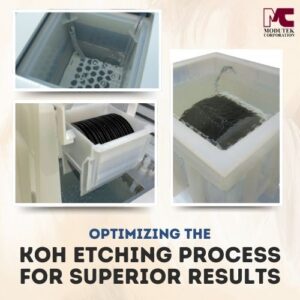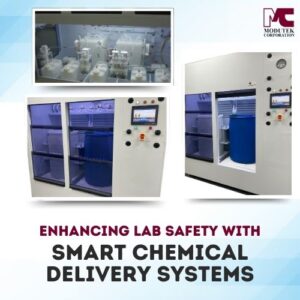 Wet bench semiconductor manufacturing has many variations and applications often have unique features. Before buying a wet bench station, there are several main things to look at before deciding what equipment is best suited for a specific manufacturing task. Options include the type of station, how it operates, how it receives its chemicals and what specialized or custom features are required. When a prospective supplier has extensive experience and the required expertise as well as offering a complete line of wet bench equipment and customization as required, the selection becomes easier. Five main things influence which of the available wet benches to buy. Knowing these five things helps determine which station satisfies the manufacturing application requirements.
Wet bench semiconductor manufacturing has many variations and applications often have unique features. Before buying a wet bench station, there are several main things to look at before deciding what equipment is best suited for a specific manufacturing task. Options include the type of station, how it operates, how it receives its chemicals and what specialized or custom features are required. When a prospective supplier has extensive experience and the required expertise as well as offering a complete line of wet bench equipment and customization as required, the selection becomes easier. Five main things influence which of the available wet benches to buy. Knowing these five things helps determine which station satisfies the manufacturing application requirements.
1. Different Types of Wet Process Stations Have Different Advantages
Types of wet benches include a standard white polypropylene construction for acid and base process applications such as KOH and RCA clean. Solvent application wet benches for processes such as acetone, IPA and photo resist stripping have a stainless steel construction. Stations are available with a dry-to-dry process and can include a chemical fume hood. An experienced supplier can advise on the different options and the customization possibilities.
2. The Degree of Automation Depends on the Application
Manual stations are best suited for initial development work when the main process parameters are not yet known. Manual stations can be used to develop a process framework. Once the overall process is set, semi-automatic stations can be used to program the fixed parameters to run automatically while operators retain manual control of some variables for optimization purposes. Once the process is fully developed, fully automated stations can be used to run the productions line and increase throughput.
3. Chemical Delivery Systems Improve Process Control
Chemical delivery systems run and monitor chemical storage, delivery to the process and disposal of chemical discharge. They minimize waste and reduce spills. Chemical delivery systems are recommended for applications that rely on highly accurate dosages of specific chemicals during the manufacturing process.
4. Rinsing and Drying are Critical for Avoiding Particle Contamination
Reduced particle counts on wafers improve process yields because particles can cause product defects. Special configurations such as the combined rinsing and drying station and the quick dump rinser improve process efficiency and reduce the particle count. Depending on the wet process application, such rinsing and drying configurations may improve overall facility performance.
5. Special Custom Functionality Can Be Built Into Standard Stations
Semiconductor equipment manufacturers that build their own wet process stations in house can add custom functionality when an application requires it. For example, an application may include etching of aluminum layers on a wafer and a special vacuum metal etcher may have to be incorporated in the wet bench process. Some applications require an especially low particle count and wafers may have to be cleaned with Megasonic equipment to dislodge and remove the tiniest particles. Such specialized custom functions work best when a custom design integrates them into the rest of the wet bench process.
Once customers are aware of these five pieces of information, they can proceed to select a supplier that can satisfy them on all five points. They will then be able to specify the kind of performance they want to achieve and help make sure that they get the equipment they need.
Modutek Builds Their Own Equipment to the Highest Standards
Modutek design and build their own equipment in house and can customize wet process stations as required. Their specialized modules include the combined rinsing and drying IPA dryer, the quick dump rinser and the Megasonic cleaner. The company can help customers with all five of the listed points and ensure the purchased wet benches meet their needs.




